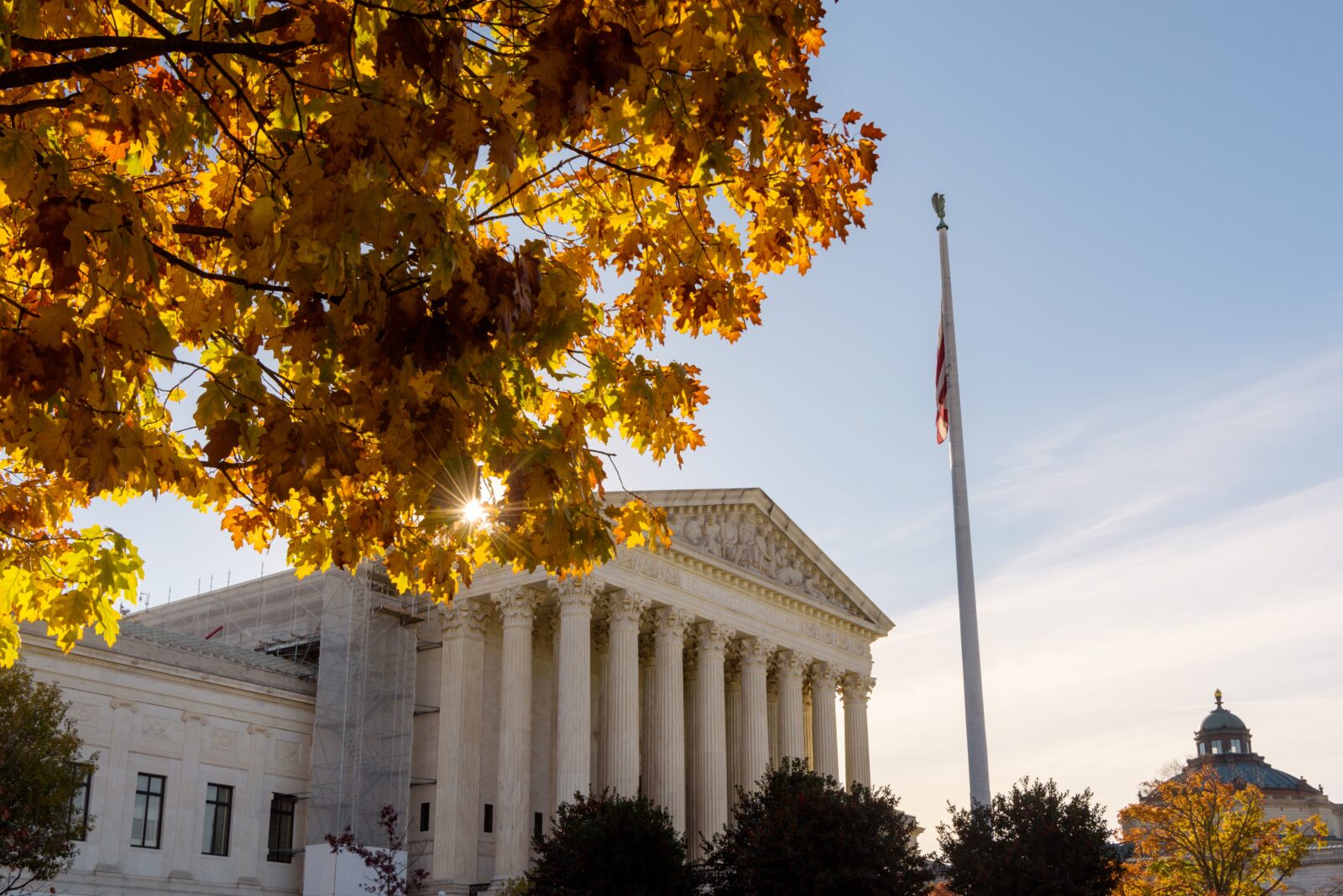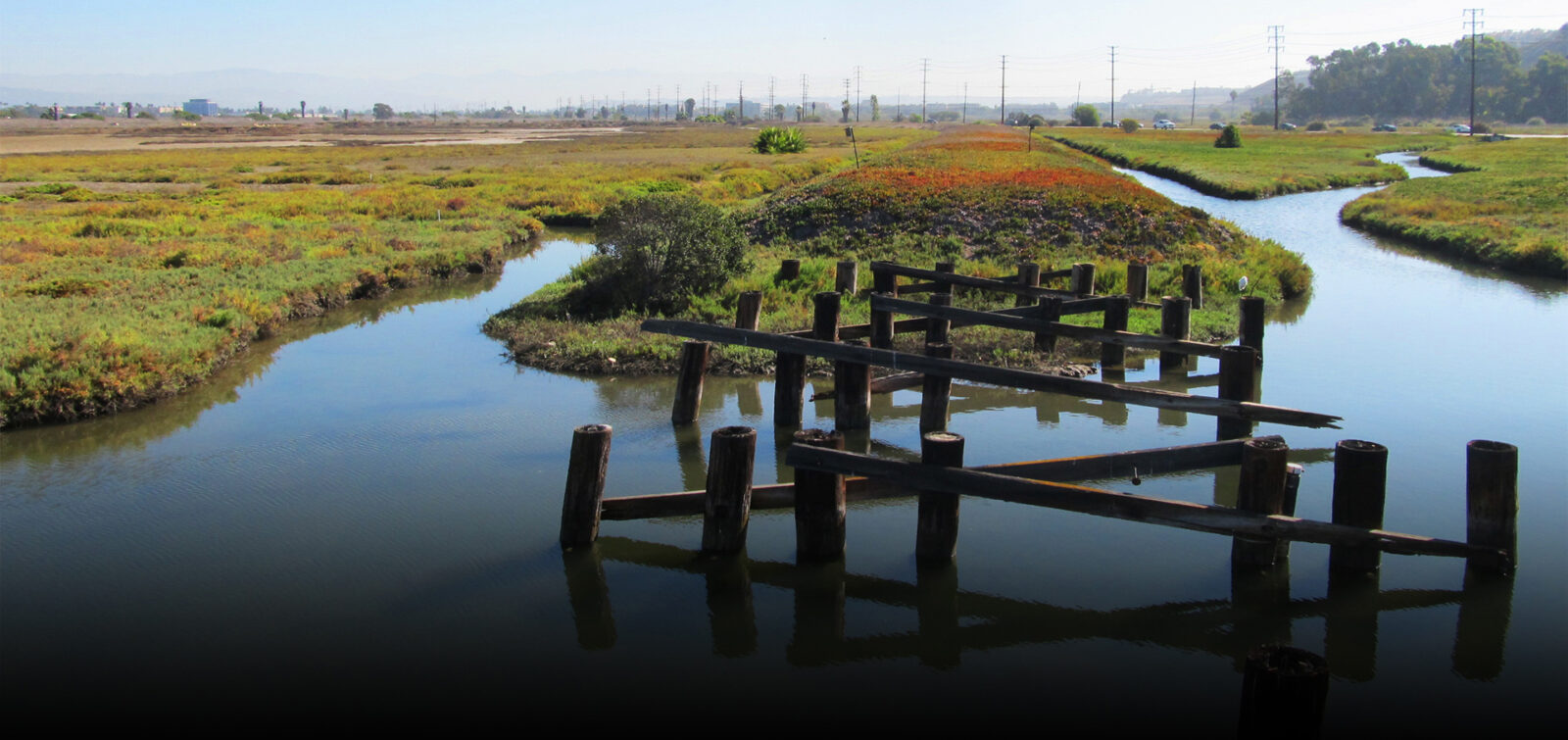
The following speech was delivered on November 7, 2025, in Salt Lake City, at The Foundation for Natural Resources and Energy Law’s Special Institute on the National Environmental Policy Act. Eric Beightel, ESA’s Federal Strategy Director, covers what permitting reform looks like in the current political climate and how we can reclaim the narrative around the benefits of environmental review. Follow ESA on LinkedIn to stay informed on all the latest NEPA and federal permitting updates. Connect with Eric Beightel here.
Reclaiming the Narrative – How Do We Rebuild our Environmental Review and Permitting Process After Disruption
Thank you for the opportunity to share some thoughts with you today. It’s always an exciting moment when you’re asked to pinch hit for a colleague and friend — until you look at the course materials and the speaker list and start questioning if they meant to ask someone else.
The academic and legal minds in this room are truly impressive, and I won’t try to match the depth of analysis others have already covered over the last day and a half.
My remarks today will instead focus on the policy and politics of NEPA — and, by extension, the broader and often misunderstood concept of permitting reform.
I’ll briefly examine how we got here, consider what’s at stake in this current reconsideration of NEPA, discuss what reform should look like and offer a few thoughts on how we can improve the process while maintaining its integrity.
As we’ve heard throughout the sessions, NEPA is under attack.
Some view those attacks as a necessary rightsizing of a procedural statute that, over fifty years, has become bloated — doing more to stop projects than to enable them.
Others see them as an assault on the very principles of public disclosure and environmental accountability that Congress enshrined in 1969.
I tend to think both camps are a little bit right.
There’s no denying that fear of litigation drives agencies to bulletproof their documents, and that actual litigation can delay projects, extend timelines, and increase costs.
But fundamentally, the soul of NEPA — to analyze, disclose, and learn from affected communities about potential impacts — must be preserved. It was never intended to be an obstacle to progress.
And yet, because the prevailing narrative paints NEPA as the problem — as a costly and time-consuming drag on infrastructure — a consensus is forming that something must be done.
The question before us is whether that something becomes an evisceration of NEPA in pursuit of progress, or a reclamation of the narrative — one that recognizes the benefits of environmental review and channels reform toward better projects, better outcomes, and a more informed and engaged citizenry.
So how did we reach the point, even in our polarized politics, where there’s broad agreement that something must change?
We don’t need to rehash the past fifty years of NEPA to understand how the narrative shifted.
When I started my career around the turn of the century, NEPA and permitting were relatively predictable.
The process was well-defined, risks were quantifiable, and while some projects inevitably got stuck in bureaucratic loops, the vast majority progressed without incident.
There wasn’t enough political appetite for substantive reform.
That changed with President Obama’s push to accelerate infrastructure delivery — born from the now-infamous idea of “shovel-ready” projects.
The 2009 Recovery Act pumped nearly a trillion dollars into the economy, including about $300 billion for roughly 88,000 infrastructure projects, all subject to NEPA.
The Administration expected those “shovel-ready” projects to spark rapid job creation, but implementation revealed the opposite: even the simplest projects faced administrative bottlenecks, and truly shovel-ready projects tended to be small and economically marginal.
By 2010, the President himself conceded, “There’s no such thing as shovel-ready projects.”
That realization spurred a serious look at why project delivery took so long.
As the staff lead at USDOT, I quickly learned that while 95% of NEPA actions are Categorical Exclusions, we had no data on how long they took — or even how many existed.
FHWA couldn’t tell us when a CE started or ended because every state tracked them differently – if they tracked them at all. The same was true for EAs.
In other words, we were trying to reform a process we couldn’t measure.
From that challenge came real innovation. President Obama issued executive actions to accelerate reviews and bring transparency, starting with a small set of “high-priority”
projects tracked on a public Permitting Dashboard — the seed of what became today’s federal permitting performance framework.
As the effort grew, we realized that while White House attention could move a handful of projects, it didn’t fix the systemic dysfunction beneath the surface: fragmented project management, uneven accountability, and limited interagency coordination.
Still, through eight years, we made measurable progress.
We elevated “permitting reform” to a State of the Union address, launched interagency sector-specific rapid response teams, and made permitting timelines a key performance metric for agencies.
During this time, Congress also passed two transportation reauthorization bills that made project delivery a focus – continuing a trend of bipartisan permitting innovation for surface transportation.
The second of those bills, the FAST Act, contained a small extra title – Title 4 – that took much of the work we’ve been doing administratively to improve interagency coordination and created a federal agency tasked with the responsibility of improving the transparency, predictability, and accountability of the federal permitting process: that agency was the Permitting Council.
I left government in 2015 optimistic — convinced we’d built a foundation for lasting change, though it would take future administrations to test and refine it.
When President Trump took office in 2017, he built on some of the very ideas we’d been testing.
His One Federal Decision ( or OFD) executive order took the long-standing concept of concurrent—not consecutive—reviews for permitting—something the Red Book from the Army Corps and FHWA had championed—and applied it government-wide.
I’ll give credit where it’s due: we generally knew OFD was the right solution, but we hadn’t been willing to push past entrenched agency resistance.
The Trump team didn’t have that problem. They broke down silos and forced the issue.
OFD directed agencies to complete all environmental reviews and authorizations for major infrastructure projects within two years, and follow-on guidance added page limits for EAs and EISs to encourage concise documentation.
While agencies were still figuring out how to implement OFD, CEQ launched its rewrite of the NEPA regulations.
OFD was policy; the rewrite was intended to give it regulatory teeth.
Finalized in 2020, the rule formally codified time and page limits and narrowed key definitions—moves supporters hailed as long-overdue modernization.
Critics, meanwhile, argued it weakened environmental protections and increased litigation risk, potentially slowing projects rather than speeding them up.
Around the same time, the administration issued a new Waters of the United States rule that reversed the 2015 Obama rule, limiting Clean Water Act jurisdiction to relatively permanent waters and wetlands with a continuous surface connection.
It was part of a broader deregulatory agenda aimed at streamlining permitting by narrowing the applicability of major environmental laws.
The result was a sharp departure from the previous administration’s approach.
Project sponsors and agencies struggled to keep pace with shifting requirements—and that confusion only deepened when President Biden moved to reverse nearly all of those actions.
With President Trump, the pendulum swung sharply toward deregulation.
When President Biden came into office, it swung just as sharply back — reintroducing many of the concepts that had been eliminated under Trump: reinstating climate considerations, restoring cumulative effects analysis, rescinding the 2020 CEQ rule, and launching two phases of rulemaking to rebuild NEPA implementation.
President Biden also doubled down on environmental justice, issuing executive orders and creating the Justice40 initiative to direct forty percent of certain federal investments to disadvantaged communities.
Then came the Bipartisan Infrastructure Law and the Inflation Reduction Act — two historic infusions of capital into our infrastructure.
They promised to accelerate the energy transition, grow the economy, and expand equity in how infrastructure benefits are distributed.
For the first time, equity and environmental justice were written directly into the statutes themselves. Permitting reform was again part of the conversation — and even marginal streamlining provisions were hailed as policy victories.
But as with the Recovery Act more than a decade earlier, not all projects moved as quickly as intended.
During the second half of President Biden’s term, I had the honor of serving as the Executive Director of the Permitting Council. From that vantage point, I saw firsthand just how difficult it can be to move projects — even those with strong political backing from the President himself.
We were in a race against time:
to deploy more renewable energy to curb greenhouse gas emissions;
to expand grid capacity to move those new electrons to power data centers, chip fabs, and new industries;
to invest billions in broadband to close the digital divide and connect underserved communities.
Yet many of those projects faced fundamental implementation challenges.
Some had never anticipated receiving federal funding and therefore hadn’t initiated a NEPA process.
Others were administered by agencies that had never before acted as funding or lead agencies under NEPA.
We had a steep learning curve to overcome — and that took time.
We also had ambitious offshore wind projects — essential to producing clean power and slowing climate change — that nonetheless carried potential environmental effects: risks to threatened species like the North Atlantic right whale, temporary construction emissions in protected airsheds, and potential impacts on marine archaeology.
And here is where the paradox of our system came into sharp focus.
The very laws designed to protect the environment sometimes worked against projects meant to protect the planet.
The system offered no mechanism to weigh global benefits against localized, often temporary, harms.
Would a modest, short-term impact to the right whale population be justified if it slowed ocean warming that threatens their long-term survival?
Would temporary emissions from an installation vessel truly outweigh the lasting reductions in fossil-fuel pollution those turbines would deliver?
Our system is unyielding; it does not allow those tradeoffs to be considered explicitly.
So we argued.
We reasoned.
We looked for creative ways within the law to move forward.
We saw similar tensions in terrestrial wind and solar projects across the West — projects that could displace endangered species or disturb critical habitat, even temporarily.
Let me be clear: there was never an effort to shortcut the law or compromise environmental protections.
But our fidelity to the law and its processes often meant that projects languished when we needed them most.
During this time, Senators Manchin and Barrasso introduced modest permitting reform legislation that would have helped transmission but also ease some restrictions on fossil fuel development.
The left wing of the Democratic party saw that as a give-away to big oil and considered it a nonstarter. There weren’t any other real options on the table and without White House buy-in, that bill never moved.
Then came the 2024 election.
The theoretical race against time to combat climate change became a very real race against the clock — to safeguard the progress we had made to advance equity, environmental justice, and to speed the clean energy transition, knowing full well that a new administration would likely seek to undo much of it.
We had no idea just how quickly that moment would arrive.
And here we are.
After fifteen years of policy whiplash — of pendulums swinging and rules being rewritten — we now find ourselves in a moment of real uncertainty.
No unifying CEQ NEPA regulations.
Environmental justice not only absent — but explicitly prohibited from the conversation.
Wind and solar projects tied up in obstructionist policies at the Department of the Interior.
Tax incentives for renewables set to expire unless significant work is already underway.
An “energy emergency” used to circumvent NEPA, the Endangered Species Act, and the National Historic Preservation Act.
And perhaps most damaging — a federal workforce being decimated through layoffs, resignations, and early retirements.
That’s not a recipe for progress.
So what now?
Recently, several thoughtful authors — mostly from the progressive side — have argued that the modern environmental agenda has created what they call a “vetocracy.”
A system where procedural tools originally meant to ensure accountability are now wielded to block progress altogether.
This coincides with the rallying cry of the “abundance agenda” — the idea that our permitting system should be rebuilt entirely to let us build more of everything, faster, with less friction.
I have some questions for the abundance movement, but I don’t entirely disagree with the premise.
The problem — and I’ve seen this throughout my career — is that we have never truly worked toward a compromise that improves the system for all projects.
Too often, our policy preferences for a certain type of project — clean energy versus fossil fuels, private versus public — cloud our ability to work across factions to improve the system itself.
Democrats refuse to support reforms that might benefit fossil fuels.
But that resistance means that projects Democrats do support — like transmission lines, wind farms, and EV infrastructure — end up stalled by the same procedural tools they’re fighting to preserve.
Republicans, meanwhile, argue for minimizing regulatory oversight and prioritizing economic growth over environmental protection.
Both sides say they want strong environmental safeguards — but the policies of both often undermine that very goal.
Something has got to give.
At the same time, our impatience to see immediate results from reform has blinded us to the systemic flaws we’ve built into the process.
Over the past fifteen years, we’ve changed the rules of environmental review at least every four years if not more often — through both administrative action and legislation.
Consider the life cycle of a major infrastructure project.
It’s not uncommon to begin planning under one regulatory regime and finish construction under a completely different set of conditions.
That kind of volatility erodes predictability, investment confidence, and accountability.
And worse, we’re trying to manage all this without comprehensive data.
When I was at USDOT, I mentioned the lack of basic data even on categorical exclusions.
Now step back and look across the entire federal government.
We don’t track all NEPA actions. We don’t consistently track permit approvals or timelines.
So Congress legislates based on anecdotes — the one project in a district that went sideways — and we reform the entire system around the outliers.
We all know that EISs make up about one percent of all NEPA actions, yet they dominate the debate. We legislate for that one percent, while neglecting the vast majority of smaller projects that may have smoother paths but still take too long — often because the agencies simply lack capacity, resources, or data to do better.
And that brings us to where we go from here.
If the last fifteen years have shown us anything, it’s that swinging the pendulum isn’t reform — it’s reaction.
True reform has to build stability and legitimacy into the system itself.
Regardless of where you fall in this debate, I hope there’s at least one area of agreement — that we need durable decisions.
Once you’ve cleared a checkpoint in the process, you should be able to keep moving forward.
We need that certainty to plan, to invest, and to build.
We also can’t keep changing the rules of the game every four or eight years.
Presidents should absolutely be able to prioritize the projects they favor — but not rewrite the rules to pick winners and losers.
If we truly want lasting reform that improves the process, we have to reclaim the narrative around environmental review and permitting.
When done well, NEPA informs project design, strengthens mitigation strategies, and produces better outcomes.
Permitting, at its core, is how we conserve and protect the resources that matter most — while allowing responsible development that meets those standards.
But it can’t be inflexible.
So, what should reform look like?
I’d argue for several pragmatic approaches — reforms that move infrastructure forward while maintaining essential environmental protections. We have to approach this with a spirit of compromise and a collective understanding of how important it is that we improve the system for everyone — not just one sector or ideology.
First, we need to amend NEPA and codify its core principles as enduring parts of federal law.
Public involvement cannot be optional.
It’s through engagement that we learn about local conditions, community concerns, and opportunities for mitigation or design improvements.
It builds trust.
It acknowledges the human impact of projects and forces decision makers to take those impacts seriously.
Alongside that, we should codify environmental justice in NEPA — requiring that we assess whether and how proposed projects may disproportionately affect historically disadvantaged groups or communities.
To balance concerns that more public involvement could slow projects or fuel litigation, we should pair those provisions with clear time limits and ensure that judicial review focuses on substantive, not procedural challenges.
I believe that every EIS project should have a coordination plan among participating agencies, a project schedule posted on the Permitting Dashboard, and a culture of transparency and accountability.
Agencies should be transparent in timing, predictable in process, and accountable to deadlines.
Second, we need to reframe how we think about permitting itself.
We’re already hamstrung by the word “permit” — as if applicants are simply seeking permission.
I think we need to flip that mindset.
Less gatekeeper, more help desk.
One of my guiding philosophies at the Permitting Council was to make our agency the federal government’s permitting help desk.
If we’re going to build at the pace the country demands, we need a shared understanding of what progress requires.
Regulators should act as advisors, helping applicants design projects that meet environmental standards from the start, with consistent application and clear expectations.
The default shouldn’t be “no.” At minimum, it should be “maybe — if you do this.”
Third, we need a central decision-making body empowered to resolve interagency conflicts.
Someone has to be in charge.
When there are conflicting requirements among agencies, there needs to be a mechanism to weigh the tradeoffs and make a final call — even if that means overriding a specific resource law in favor of a broader public benefit.
I’m biased, but I believe the Permitting Council is well positioned to play that role.
Right now, our siloed agency approach and our patchwork of resource-specific laws create a maze of bureaucracy with no clear lead.
That structure doesn’t serve anyone — not the public, not the environment, and not the projects themselves.
When these ideas come up, the common objection is: “That sounds fine while our party’s in charge, but what happens when the other side takes over?”
We can’t be governed by that fear.
The present is challenging enough.
We need to embrace true reform and trust that elections, the courts, and the checks and balances built into our system will keep us on course.
Our inability to act — our fear of unintended consequences — is exactly what brought us here. It’s time to rip the Band-Aid off.
Finally, we must invest in technology and people.
This administration is hollowing out the federal workforce through layoffs, retirements, and resignations.
We need to reinvest in expertise — to make public service attractive again — but we also have to accept that staffing levels won’t rebound overnight.
That means leaning on technology to make agencies more efficient.
This isn’t optional.
We have to embrace innovation and tailor our workforce to use these tools to rethink how we handle many routine tasks.
Artificial intelligence is already here, and it’s only going to get more capable. The question isn’t whether we use it, but how we use it to reinforce good governance, not replace it.
We need to harness that power and use it ethically, transparently, and responsibly — to help us do our jobs better.
If we want to maintain even a baseline level of service, we have to figure out how to do more with less.
Fortunately — or perhaps unfortunately — federal employees have plenty of experience with exactly that challenge.
Now, I have no illusions that any of this will be easy. But we’re at a pivotal moment.
Both sides acknowledge the need for reform.
The current administration is dismantling the regulatory infrastructure we depend on to protect the environment.
That gives us a rare opportunity — not just to react, but to reimagine the system.
If they’re going to tear it all down — how do we want to rebuild it?
The politics are hard — the fact that I’m standing here instead of Ana is proof of that.
But if we can construct a solution that evens the playing field for all sectors, integrates public engagement, modernizes judicial review, and reorients the process toward designing better projects, we can rebuild trust.
We can reclaim the narrative around environmental review and permitting — and prove that we can do both: we can build the infrastructure America needs without sacrificing environmental protection.
We can do hard things.
For as troubling as these last ten months have been — and as concerned as I am about the next thirty-eight — I remain optimistic that we will emerge from this moment and rebuild a better, more credible, more capable permitting system.
If they’re going to tear it all down — how WILL we rebuild it?
Thank you for your time. I’m happy to take your questions.








